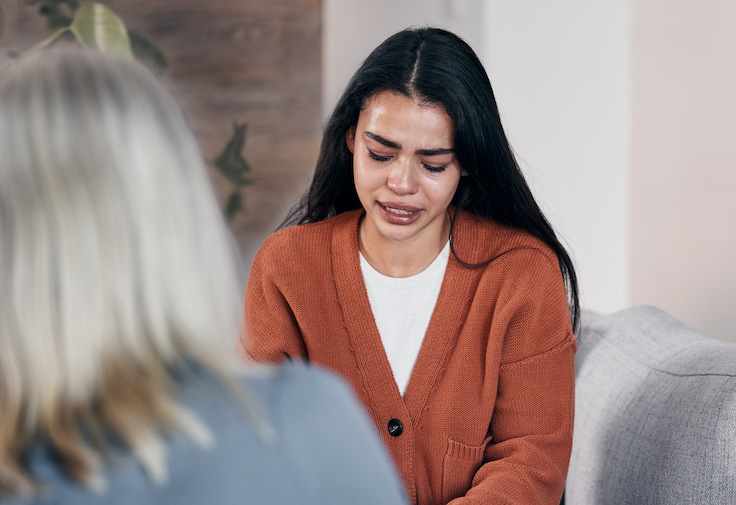
You had taken several opioids throughout the years and had been proud that you had never experienced an overdose before. However, after a night when you took a dose from a batch of heroin that a dealer told you was the strongest yet, you woke up in the hospital. The doctor informed you that you had an overdose that was a result of the combination of heroin and gabapentin in your system. He asked if you took the medication for seizures and if you understood the risks of combining heroin with gabapentin. You had never heard of gabapentin before. What was gabapentin, and how did it end up in your system?
In 2020, there were 672 reports of gabapentin-associated overdose deaths in Tennessee. This number also indicates a growing number of gabapentin overdose deaths in Tennessee, as in 2011, there were no reported cases of gabapentin overdose deaths. It is also important to note that of all the states in the country, Tennessee had the highest number of gabapentin reports that year, with most occurring in Eastern Tennessee.
At ReVIDA® Recovery, we have same-day appointments available. These allow you to get started on your treatment before you have the opportunity to change your mind. Often, people might experience wait lists or multi-day waits when deciding to get treatment. Waiting may result in individuals changing their minds and returning to use. We also use this blog to inform you about different substances, such as gabapentin and opioids.
Table of Contents
So, What Is Gabapentin?
Gabapentin is an anticonvulsant that reduces pain in nerve cells in the brain. Typically, this medication reduces seizures and pain. Some brand names gabapentin falls under are Neurontin®, Gralise®, and Horizant®. However, some people might use gabapentin in illicit ways, as well. There have been reports that using gabapentin in this way has resulted in feelings of euphoria, relaxation, a sense of calm, and improved sociability. Sometimes, dealers will mix it with opioids to increase the effects of the opioid, which increases the potential of an overdose. Some people might refer to it on the street as “gabbies.”
How Do People Use Gabapentin?
Typically, gabapentin prevents and controls seizures. It can also treat restless leg syndrome and pain associated with shingles. Doctors may use it to treat pain that results from numbness caused by diabetes or hot flashes that result from menopause or breast cancer. Sometimes, gabapentin is prescribed as part of alcohol withdrawal or in treating anxiety and depression, though it is uncommon to use gabapentin in this way. When using gabapentin illicitly, it typically produces effects similar to effects felt by opioid use.

Gabapentin and Opioids: Similarities
While gabapentin is not an opioid, it does share some similarities to opioids. Here are some of the similarities they share:
- Doctors may prescribe both for pain management for conditions such as cancer or seizures
- Both can be fatal if someone experiences an overdose
- People may use both illicitly to have feelings of euphoria
- Both can cause respiratory depression
- People might illicitly combine both with other substances to increase potency
Gabapentin and Opioids: Differences
However, this is where their similarities come to an end. Gabapentin is not an opioid, which means Narcan® (naloxone) will not work if someone is overdosing as a result of gabapentin. However, Narcan® (naloxone) should be used for all suspected overdoses, especially if the substance is unknown, as it does work for opioid overdoses. Gabapentin also has a long half-life of around 6.5 hours, while many opioids have half-lives of only a few hours. Also, the most common reason doctors prescribe gabapentin is to treat epileptic seizures and nerve pain. However, when opioids, such as morphine or fentanyl, are prescribed, it is often strictly to manage pain following surgery or in response to cancer.
Dangers of Taking Gabapentin and Opioids at the Same Time
Generally, gabapentin, when used as intended, does not put people at risk of overdose. Sometimes, doctors may prescribe an opioid with gabapentin to treat chronic pain. However, caution is essential because when someone uses gabapentin and opioids simultaneously, they create an increased risk of overdose and death. This risk occurs because both substances are known to slow down breathing.
This increased risk is even more dangerous when gabapentin is mixed into illicit opioids, as it can be challenging to know if this combination is in your batch at the moment. Combining any two or more substances can be unpredictable. Even if you have taken gabapentin and opioids together before, it is still essential to take precautions when you or the person you have gotten the substances from combine them. These precautions are necessary because the dosages might be different between batches, and the different batches can be unpredictable.
One of the reasons people might combine gabapentin is because they have built up an opioid tolerance. While opioid tolerance does not necessarily mean someone has an opioid use disorder, it often means that the dosages they were taking no longer give them the exact effects that they once did. People will then decide to take higher doses, or they might combine opioids with other substances like gabapentin to reach the same effects as before. However, both decisions put them at risk of developing an overdose.
Common symptoms of an overdose include:
- Drowsiness
- Unconsciousness
- Slowed breathing
- Choking
- Confusion
- Small pupils
- Blue nails

Opioid Use Disorder Treatment in Eastern Tennessee
Embarking on the path to recovery from an opioid use disorder can seem daunting. If you have been taking opioids for several years now, you might not know what you are like without opioids. Or if you have tried in the past to stop taking opioids, you may have had several withdrawal side effects that made you believe it was too challenging to leave opioids behind. However, the truth is that recovering from opioids can be life-changing. The combination of withdrawal symptoms and cravings can bring many obstacles, but Suboxone can help make it more manageable, allowing you to focus on your recovery.
Suboxone treatment can be a lifesaving tool for many people who are recovering from an opioid use disorder. The cravings that come from opioid withdrawal can make it difficult to focus on treatment. However, Suboxone can safely relieve those symptoms, which makes it a great option when it comes to reclaiming one’s life from opioid use disorders.
Focusing on your recovery allows you to focus on therapy and other treatments you may receive during recovery. These treatments might include individual counseling, group therapy, or 12-step meetings. These programs allow you to receive this life-changing treatment and form the foundation to guide you throughout your healing journey.
Here at ReVIDA® Recovery, we have several locations throughout Eastern Tennessee that dedicate their lives to helping you reclaim your life from opioid use disorder. To achieve this, we offer personalized assistance ranging from finding a job, court letters, applying for aid, or CPS and custodial proceedings. If you wish to get started on treatment today or have any concerns you want to address, please call us at 423-631-0432.
FAQs About Gabapentin and Opioids
Is gabapentin an opiate?
Gabapentin is not an opiate. It is instead an anticonvulsant. Typically, doctors will prescribe anticonvulsants to treat seizures. However, they may also prescribe them to treat restless leg syndrome, pain, hot flashes, and anxiety. Sometimes, people may combine gabapentin with an opioid to increase its potency.
Can you take painkillers while taking gabapentin?
Sometimes, opioids are co-prescribed with gabapentin. However, it is essential to exercise caution when taking these together, as both substances have the potential to slow breathing. If you need to take the substances together, you will want to minimize their interactions. One of those ways is with dose titration. Dose titration refers to slowly increasing the dose to limit potential side effects and monitor when side effects may appear.








